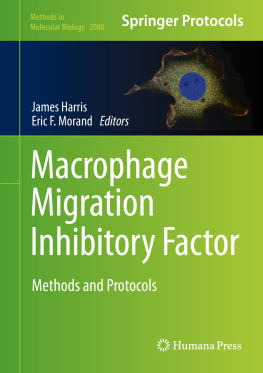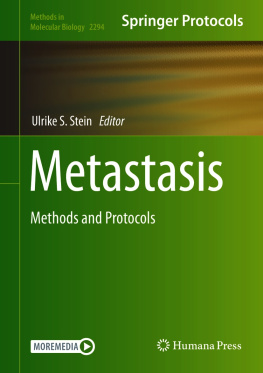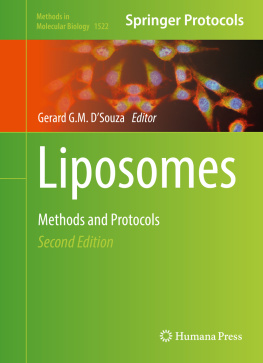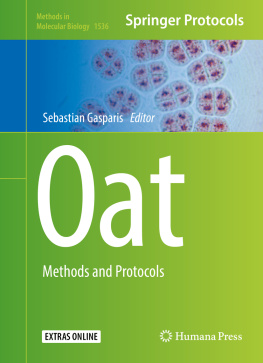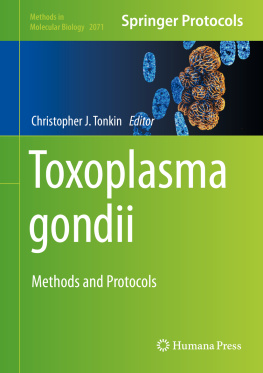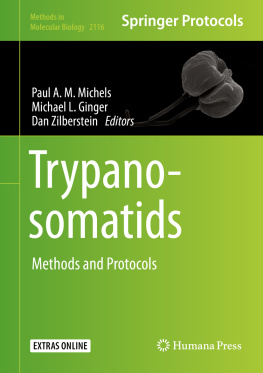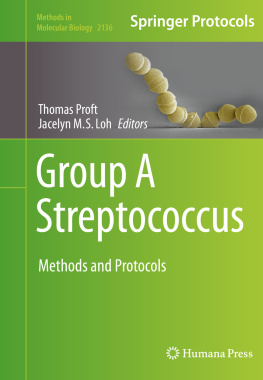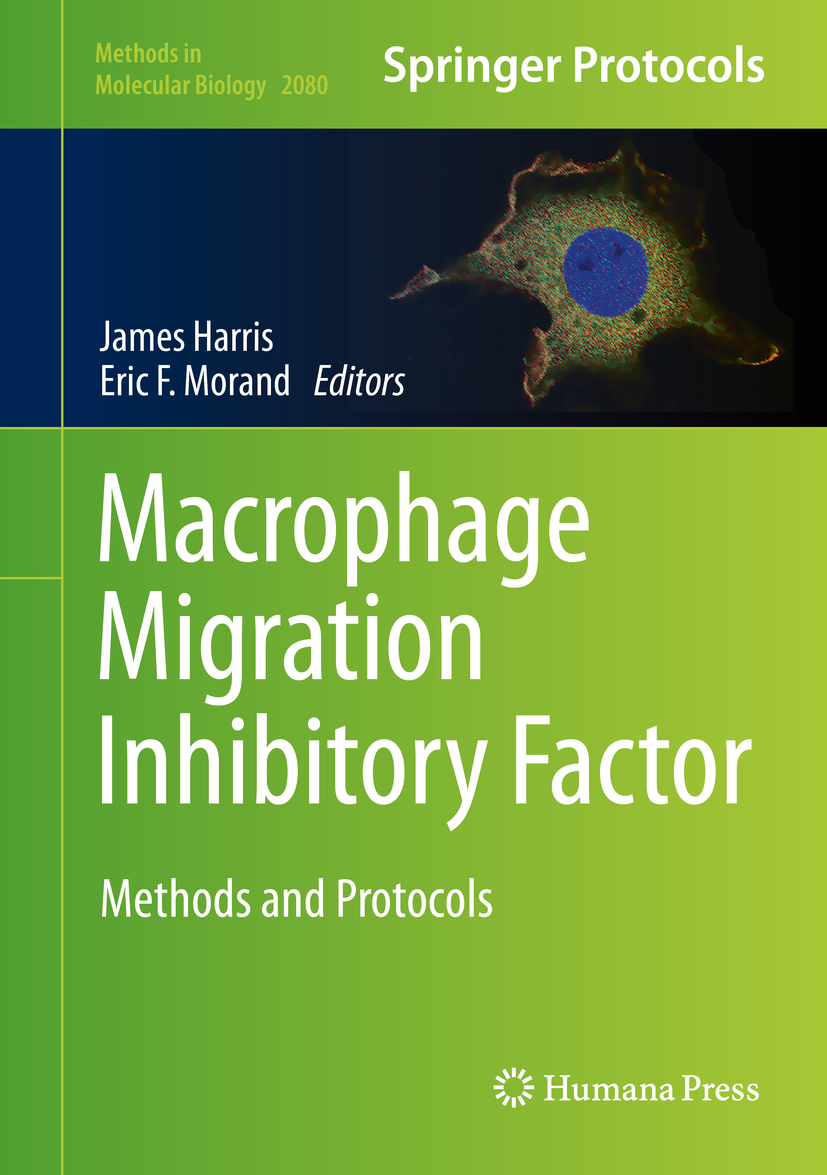Volume 2080
Methods in Molecular Biology
Series Editor
John M. Walker
School of Life and Medical Sciences, University of Hertfordshire, Hatfield, Hertfordshire, UK
For further volumes: http://www.springer.com/series/7651
For over 35 years, biological scientists have come to rely on the research protocols and methodologies in the critically acclaimedMethods in Molecular Biologyseries. The series was the first to introduce the step-by-step protocols approach that has become the standard in all biomedical protocol publishing. Each protocol is provided in readily-reproducible step-by-step fashion, opening with an introductory overview, a list of the materials and reagents needed to complete the experiment, and followed by a detailed procedure that is supported with a helpful notes section offering tips and tricks of the trade as well as troubleshooting advice. These hallmark features were introduced by series editor Dr. John Walker and constitute the key ingredient in each and every volume of theMethods in Molecular Biologyseries. Tested and trusted, comprehensive and reliable, all protocols from the series are indexed in PubMed.
Editors
James Harris and Eric F. Morand
Macrophage Migration Inhibitory Factor
Methods and Protocols
Editors
James Harris
Rheumatology Group, Centre for Inflammatory Diseases, Department of Medicine, School of Clinical Sciences at Monash Health, Faculty of Medicine, Nursing and Health Sciences, Monash Medical Centre, Monash University, Clayton, VIC, Australia
Eric F. Morand
Rheumatology Group, Centre for Inflammatory Diseases, Department of Medicine, School of Clinical Sciences at Monash Health, Faculty of Medicine, Nursing and Health Sciences, Monash Medical Centre, Monash University, Clayton, VIC, Australia
ISSN 1064-3745 e-ISSN 1940-6029
Methods in Molecular Biology
ISBN 978-1-4939-9935-4 e-ISBN 978-1-4939-9936-1
https://doi.org/10.1007/978-1-4939-9936-1
Springer Science+Business Media, LLC, part of Springer Nature 2020
This work is subject to copyright. All rights are reserved by the Publisher, whether the whole or part of the material is concerned, specifically the rights of translation, reprinting, reuse of illustrations, recitation, broadcasting, reproduction on microfilms or in any other physical way, and transmission or information storage and retrieval, electronic adaptation, computer software, or by similar or dissimilar methodology now known or hereafter developed.
The use of general descriptive names, registered names, trademarks, service marks, etc. in this publication does not imply, even in the absence of a specific statement, that such names are exempt from the relevant protective laws and regulations and therefore free for general use.
The publisher, the authors, and the editors are safe to assume that the advice and information in this book are believed to be true and accurate at the date of publication. Neither the publisher nor the authors or the editors give a warranty, express or implied, with respect to the material contained herein or for any errors or omissions that may have been made. The publisher remains neutral with regard to jurisdictional claims in published maps and institutional affiliations.
This Humana imprint is published by the registered company Springer Science+Business Media, LLC, part of Springer Nature.
The registered company address is: 233 Spring Street, New York, NY 10013, U.S.A.
Preface
Macrophage migration inhibitor factor (MIF) is one of the most enigmatic molecules in biology. Highly conserved across species, including homologs in plants, its activity was first identified in the 1960s, in studies of cellular migration during delayed hypersensitivity responses. In two independent studies, a soluble factor inhibiting leukocyte migration in vitro was identified [1, 2]. Akin to many other proteins named in the early days of immunology, such as tumor necrosis factor (TNF), its range of functions vastly exceeds those implied by its historical name. Human and mouse MIF were not definitively cloned until the early 1990s [3, 4], after which the roles attributed to this intriguing molecule have grown and continue to do so. Indeed, studies now suggest that its name may be misleading, as it actually has chemotactic properties for a number of cell types, including monocytes, neutrophils, and lymphocytes [5, 6], recruiting and retaining them at sites of inflammation. Significantly, studies now highlight a wide repertoire of roles for MIF, both within and outside the immune system, that encompass both cytokine-like effects and discreet intracellular functions [7].
Indeed, the biology of MIF is an exemplar of the famous adage, attributed to both Aristotle and Albert Einstein, the more we learn, the more we realise how little we know. The fact that the deletion of MIF results in large effects on cell biology and models of disease informs regarding its importance in pathology, and potential as a therapeutic target across a host of inflammatory and autoimmune diseases, including sepsis, arthritis, multiple sclerosis, systemic lupus erythematosus, and inflammatory bowel disease [812]. However, MIF-deficient mice are surprisingly healthy, consistent with substantial redundancy of MIFs effects with as yet unidentified other proteins. The fact that MIF is detectable in the extracellular space and that antibody neutralization has powerful inhibitory effects on immunity in vitro and in vivo imply cytokine-like function. However, MIF detectable in serum at high concentrations in health arguably indicates a nontraditional cytokine-like role. Moreover, its enzymatic actions, abundant intracellular reservoir, and multiple well-documented interactions with cytoplasmic proteins, point to important intracellular functions. Thus, there is still much to be discovered (and resolved) regarding the intracellular and extracellular actions of MIF and further studies will continue to take us closer to full realization of its therapeutic potential.
In addition to scientific curiosity, this therapeutic promise continues to drive research programs in MIF biology today. Repeated independent demonstrations of the potential benefit of MIF inhibition in inflammatory diseases is matched by strong evidence in multiple cancers. And yet, despite this evidence base and multiple attempts by both small biotech companies and major pharmaceutical companies to develop MIF inhibitors, no such treatment has reached the market. A lack of complete resolution of the biology of MIF is, we suggest, a major limiting factor on advancing this cause, as without knowledge of the biology, therapeutic inhibition of MIF carries a risk profile that is unknowable.
In this volume ofMethods in Molecular Biology, we have sought to bring together expertise across a range of areas of biology in which MIF has been studied, to provide a methodological foundation for further MIF research. In each chapter, leading experts have outlined experimental approaches that can be replicated in new labs as interest in MIF research continues to grow. Methodological approaches to quantification of MIF in cell supernatants and human samples, using methods such as ELISA and Western blot analysis are described, along with detection of intracellular MIF using flow cytometry, and detection of MIF in the protozoan parasite

